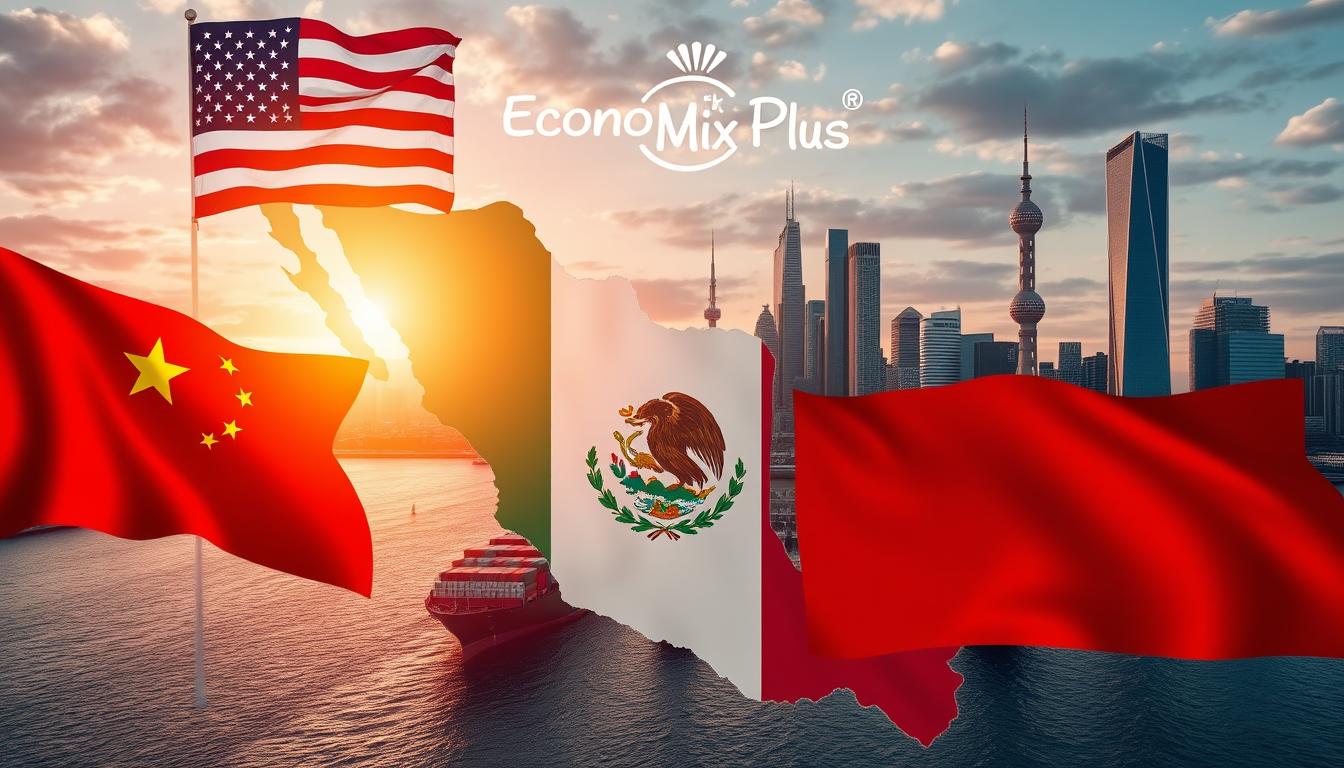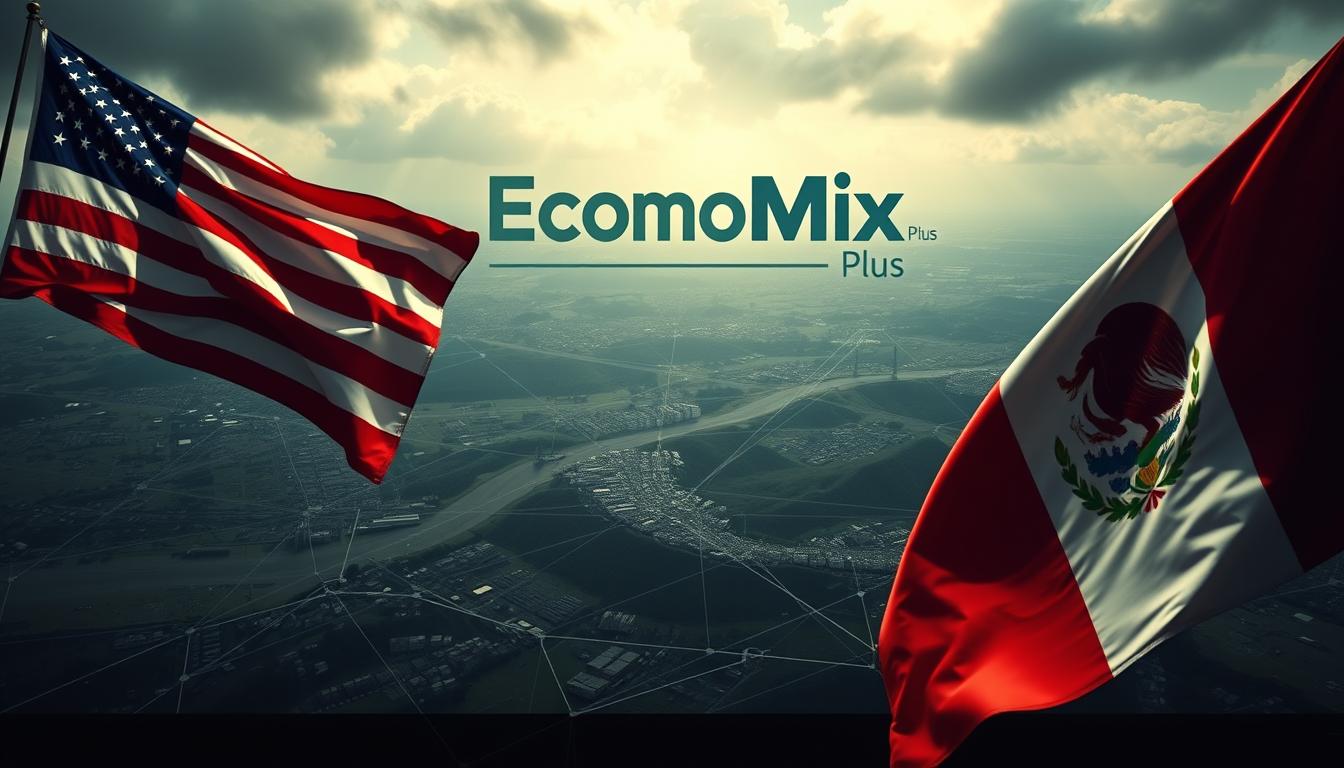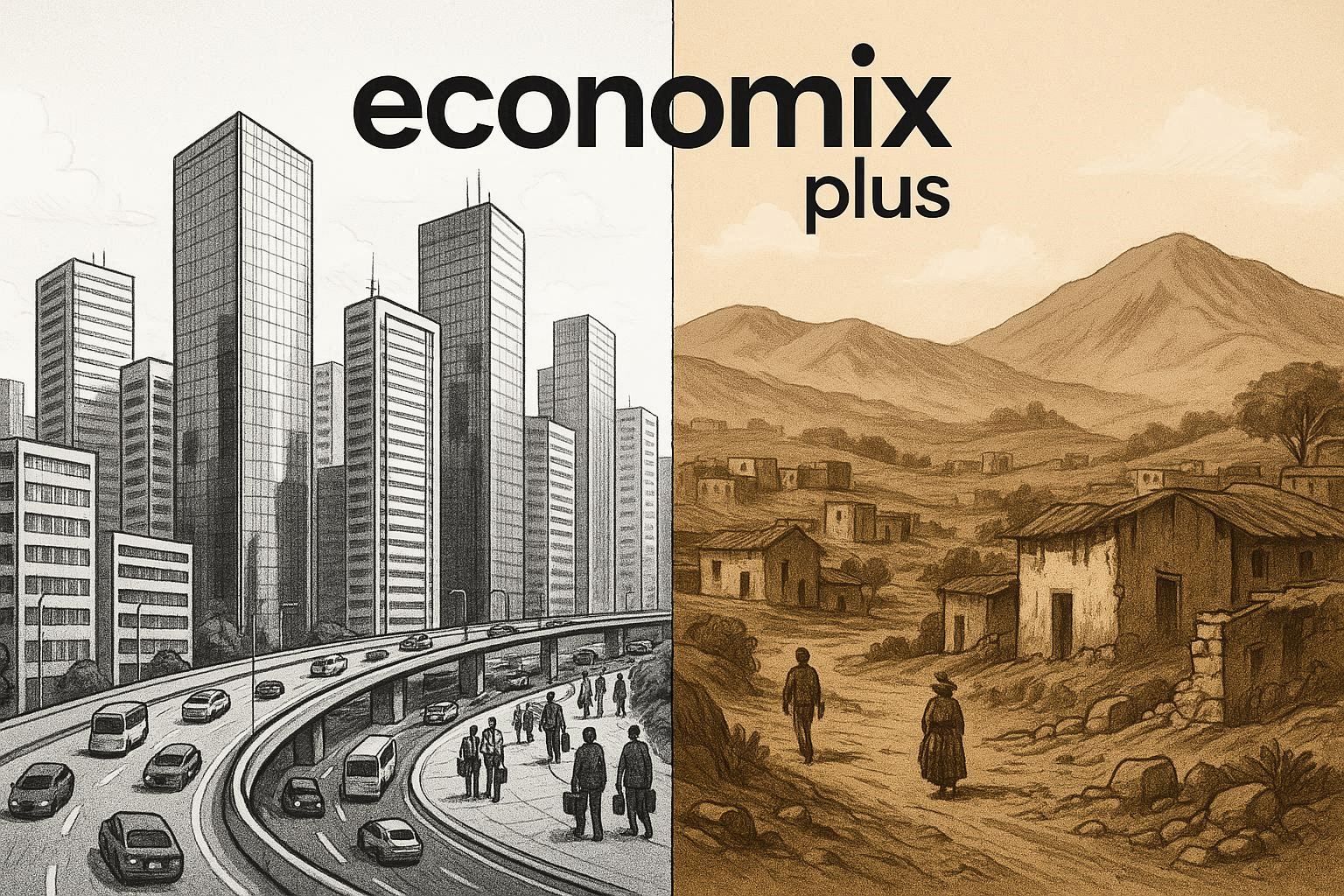What makes a country a vital link in the global trade network? Mexico’s strategic position has transformed it into a key player in the world economy. With its proximity to the United States and growing ties with China, it has become a bridge connecting two of the largest economies.
In 2024, Mexico surpassed China as the second-largest trading partner with the United States. This milestone highlights its growing influence. Trade between Mexico and China also saw a record 26% growth in container trade during the first seven months of the year.
Geopolitical tensions and shifting manufacturing trends have further boosted Mexico’s role. Chinese investments, including a $6 billion announcement in October 2024, have fueled its economic growth. The USMCA agreement has also played a critical role in enabling “Made in Mexico” labeling, attracting more businesses.
Mexico’s economy, now the 15th largest globally, continues to thrive under dual pressures. Tariff policies from the United States and investments from China are shaping its future. Nuevo León’s logistics boom is a testament to its evolving role in global trade.
Key Takeaways
- Mexico surpassed China as the second-largest trading partner with the United States in 2024.
- Trade between Mexico and China grew by 26% in container trade from January to July 2024.
- Chinese investments in Mexico reached $6 billion in October 2024.
- The USMCA agreement supports “Made in Mexico” labeling, boosting manufacturing.
- Mexico’s economy ranks as the 15th largest globally, driven by trade and investments.
Introduction: Mexico’s Strategic Position in Global Trade
Positioned as a global trade hub, this country connects major economies. Its geographic advantage has made it a cornerstone in international commerce. From NAFTA to the USMCA, trade agreements have shaped its economic landscape.
In 2023, it ranked as the 11th largest economy globally by purchasing power parity. The US accounted for 40% of its total foreign direct investment. This highlights its strong ties with its northern neighbor.
Chinese investments have also surged, with $3.5 billion in FDI and an estimated $22.5 billion in real investments. The automotive sector saw 70% of these funds directed toward manufacturing. Huawei’s dominance in telecom infrastructure, with 80% of antennas, further underscores this trend.
Cross-border logistics have grown significantly. Trade between China and this country increased by 33% in 2023, highlighting the government’s role in facilitating these imports from China. Nuevo León has emerged as a northern manufacturing hub for car production, while Laredo, TX, handles 8,900 trucks daily as the busiest freight gateway, underscoring the importance of timely imports.
“The USMCA’s ‘sufficient transformation’ clause has been a game-changer, enabling ‘Made in Mexico’ labeling and boosting production.”
Airbus and Bombardier plants have established a strong aerospace manufacturing presence. This diversification strengthens its role in global markets. The country’s ability to adapt to shifting trade dynamics ensures its continued growth.
| Key Metric | Data |
|---|---|
| Global Economic Ranking (PPP) | 11th |
| US Share of FDI (2023) | 40% |
| Chinese FDI (2023) | $3.5 billion |
| Automotive Sector Investment | 70% of Chinese FDI |
| Trade Growth (China, 2023) | 33% |
This nation’s strategic position continues to drive its economy. Its ability to balance trade relationships and attract investments ensures its prominence in the world market.
Mexico’s Trade Relationships: A Balancing Act
Balancing trade relationships requires strategic foresight and adaptability. Over the years, this nation has managed to maintain strong ties with both the United States and China. This dual focus has positioned it as a critical player in the global market.
The relationship with the United States has been bolstered by the USMCA agreement. This pact has streamlined trade, enabling smoother movement of goods across borders. It has also supported the growth of domestic industries, making the country a key exporter.
The US-Mexico-Canada Agreement (USMCA) and Its Impact
The USMCA has been a game-changer for trade dynamics. It has encouraged businesses to label products as “Made in Mexico,” boosting local manufacturing. This has attracted significant investment from multinational corporations.
Cross-border logistics have also benefited. Trucking records show a 12% year-over-year increase, highlighting the efficiency of this trade route. The agreement ensures that parts and products move seamlessly, supporting industries like automotive and electronics, making Mexico a key point for imports from China and a significant exporter to various countries.
China’s Growing Influence in Mexico
China’s role in this nation’s economy has expanded significantly. From 2000 to 2020, the Chinese value in exports rose from 5% to 40%. This growth underscores the deepening trade relationship between the two countries.
Recent data shows a 33% increase in container trade between China and this nation in 2023. Chinese companies are also investing heavily, with projects like TCL’s $1.6 billion LCD factory in Querétaro. These ventures highlight the strategic importance of this market.
| Key Metric | Data |
|---|---|
| Chinese Value in Exports (2000) | 5% |
| Chinese Value in Exports (2020) | 40% |
| China-Mexico Container Trade Growth (2023) | 33% |
| TCL LCD Factory Investment | $1.6 billion |
Despite challenges like tariff hikes and policy reversals, the trade relationship remains robust. This nation’s ability to balance these partnerships ensures its continued economic growth today.
How Is Mexico Leveraging Its Golden Location Between the US and China?
The evolving global trade landscape has positioned this nation as a critical intermediary. In 2024, trade between this country and the United States reached $798 billion, surpassing the $575 billion trade volume with China. This shift underscores its growing role in global supply chains.
Border crossings have surged by 19%, reflecting increased activity in cross-border logistics. Meanwhile, US imports from China fell by 13% from 2022 to 2024. This decline highlights the redirection of trade flows toward this nation.

Tesla’s Monterrey gigafactory is a prime example of this trend. The facility is expected to boost local manufacturing and create thousands of jobs. Similarly, Chinese EV makers have announced $2.4 billion in planned investments, further solidifying this country’s position in the automotive sectors.
The USMCA’s renegotiation in 2026 is strategically timed to address emerging trade challenges. Provisions like the Inflation Reduction Act’s 45X tax credit are incentivizing businesses to relocate operations. This has led to the development of 14 new logistics hubs in Chihuahua, enhancing cross-border efficiency.
Chinese refinery technology partnerships with PEMEX are also reshaping the energy economy. These collaborations are driving innovation and reducing dependency on foreign expertise. The 26% rise in Chinese components crossing the border further strengthens the bilateral relationship.
US Customs’ focus on “substantial transformation” audits ensures compliance with trade agreements. This scrutiny supports the growth of value-added manufacturing, aligning with the Maquiladora 2.0 model. As a result, this nation continues to thrive as a global trade hub.
The Manufacturing Boom: Near-Shoring and Supply Chain Shifts
The global shift in manufacturing has created new opportunities for strategic players. Near-shoring trends are reshaping supply chains, with companies relocating production closer to key markets. This move reduces risks and enhances efficiency in a competitive landscape.

US companies are expanding operations to capitalize on these changes. The proximity to the United States allows for faster delivery of goods and lower transportation costs. This trend is particularly evident in industries like automotive and electronics.
US Companies Expanding Operations
American firms are investing heavily in local facilities. The USMCA agreement supports “Hecho en México” labeling, ensuring compliance with trade regulations. This strategy not only boosts exports but also strengthens the domestic manufacturing sector in a way that reflects the government’s commitment over the past years to reduce imports from China and improve trade relations with other countries.
For example, CATL’s battery plant localization efforts highlight the growing demand for energy solutions. These investments are driving innovation and creating jobs, further solidifying the region’s role in global chains.
Chinese Companies Using Mexico as a Backdoor to the US Market
Chinese firms are leveraging this nation’s strategic position to access the US market. By establishing manufacturing hubs, they bypass tariff restrictions and reduce costs. This approach has led to significant investment in sectors like electric vehicles and appliances.
BYD’s $1 billion Chihuahua EV plant and Hisense’s $300 million Monterrey factory are prime examples. These projects not only enhance competition but also contribute to the local economy. Cross-border e-commerce platforms like Shein are also capitalizing on these opportunities.
As near-shoring continues to gain momentum, this nation remains a vital link in global chains. Its ability to attract diverse investments ensures its prominence in the evolving trade landscape.
Geopolitical Challenges: Navigating US-China Tensions
Navigating geopolitical tensions requires strategic adaptability and foresight. The interplay of global trade policies shapes economic landscapes, especially for nations caught between major powers. Balancing competing interests is key to sustaining economic growth in this complex environment.

Mexico’s Response to US Tariffs and Trade Policies
US tariffs have reshaped trade dynamics, prompting strategic adjustments in response to increasing imports from China. The USMCA renegotiation in 2026 aims to address emerging challenges, including semiconductor supply chain reshoring and critical minerals access, which have become more significant in recent years.
These measures are designed to strengthen local production and reduce dependency on foreign goods, particularly as countries like the United States navigate the complexities of imports from China over the years.
Customs modernization initiatives are also underway to streamline cross-border trade. Enhanced labor value content verification systems ensure compliance with trade agreements. These efforts aim to boost exports and strengthen the local economy.
The Future of US-Mexico Trade Under the Trump Administration
The Trump administration’s policies have had a lasting impact on trade relationships. Proposed CFIUS expansions could further regulate foreign investment, particularly from China. This move aims to protect national interests while fostering healthy competition.
Chinese investment in Mexico is projected to grow by 130% from 2024 to 2027. This surge highlights the strategic importance of this market. Energy sector investment restrictions and digital trade data localization requirements are also being negotiated to ensure fair practices.
| Key Initiative | Impact |
|---|---|
| USMCA Renegotiation | Strengthens local production and trade compliance. |
| CFIUS Expansion | Regulates foreign investment to protect national interests. |
| Chinese FDI Growth | Projected 130% increase from 2024 to 2027. |
| Customs Modernization | Streamlines cross-border trade and enhances efficiency. |
As geopolitical tensions continue to evolve, strategic partnerships and policies will shape the future of trade. Adapting to these changes ensures sustained economic growth and global relevance.
Mexico’s Role in the Global Trade Landscape
As global trade dynamics evolve, this country continues to solidify its position as a pivotal player. With a projected $1 trillion trade volume with the US by 2027, its economy is set for significant growth. This underscores its importance in global supply chains and its ability to adapt to shifting trade patterns.
However, challenges remain. Workforce development and renewable energy infrastructure are critical areas needing attention. Intellectual property reforms and customs pre-clearance programs are also essential to sustain this momentum.
Digital manufacturing adoption rates are rising, reflecting its commitment to innovation. As the world navigates US-China decoupling and increasing imports from China, this country’s strategic relationship with both powers positions it as a key hub for exports and investment over the coming years.
This dynamic allows Mexico to enhance its trade capabilities with various countries while optimizing its import and export strategies.In the coming years, its ability to address these challenges will determine its long-term success in the global trade landscape.
FAQ
▶
▶
▶
▶
▶
▶
▶














